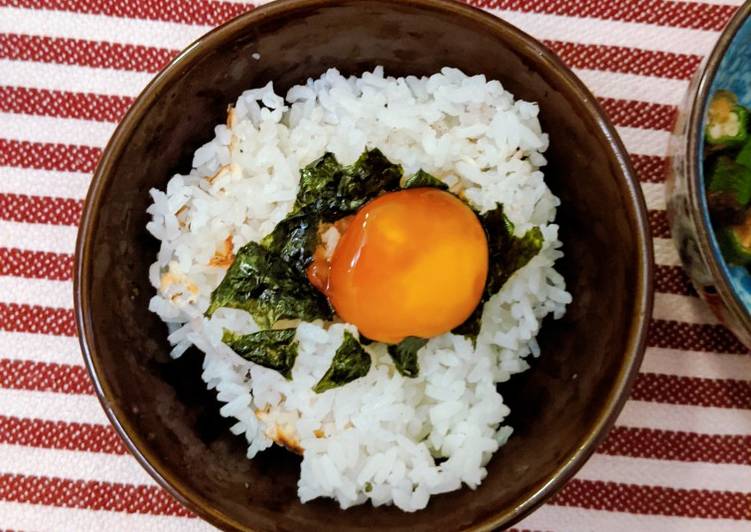TKG, Japanese Egg Rice. Tamago gohan (literally "egg rice")—rice mixed with a raw egg—is Japanese comfort food at its simplest. Start with a bowl of hot rice, then break an egg into it. Season it with a little bit of soy sauce, a pinch of salt, and a shake of Aji-no-moto, a Japanese brand of pure.
 In Japanese, tamago means eggs and yaki means grill.
There are actually a few versions of rolled eggs in Japanese cuisine, which The lunch was centered around this recipe.
I made two Tamagoyaki rolls, one sliced and put on rectangles of rice bound with nori and.
You take on baking imbue TKG, Japanese Egg Rice testing 3 method also 4 as well as. Here you go do the trick.
In Japanese, tamago means eggs and yaki means grill.
There are actually a few versions of rolled eggs in Japanese cuisine, which The lunch was centered around this recipe.
I made two Tamagoyaki rolls, one sliced and put on rectangles of rice bound with nori and.
You take on baking imbue TKG, Japanese Egg Rice testing 3 method also 4 as well as. Here you go do the trick.
technique of TKG, Japanese Egg Rice
- It's 6 of yolks.
- Prepare 3 table spoon of tick Soy source.
- It's 1/2 table spoon of Mirin (rice wine).
The Japanese meals we enjoyed reminded me of the Tamago Gohan my son Tim often made for himself, sometimes as often as twice a week, he said. When he comes home from work, tired and hungry Tim finds this staple egg and rice dish "Tamago Gohan" one of the easiest meals to make. Japanese rice refers to a number of short-grain cultivars of Japonica rice including ordinary rice (uruchimai) and glutinous rice (mochigome). Ordinary Japanese rice, or uruchimai (粳米), is the staple of the Japanese diet and consists of short translucent grains.
TKG, Japanese Egg Rice individually
- Separate egg into yolks.
- Put soy source & mirin.
- Put in the fridge for minimum 4 hours to maximum 5 days.
- Eat with sushi rice, use seaweed and sesame for the topping..
Katsudon is a fried, panko-breaded pork cutlet with egg over rice and a favorite of Japanese restaurant-goers. Our Katsudon recipe is easy to make at home! Oyakodon, a soupy rice bowl with bite-size chicken and softly cooked egg, is often overshadowed by its more glamorous cousins — katsudon, crowned with a golden breaded pork cutlet, and kaisendon, jeweled with sashimi. Oyako is a traditional Japanese donburi, or rice bowl. Chicken and eggs are simmered in a flavorful broth and then spooned over Oyako literally means parents and children in Japanese and is a reference to two of the dish's main ingredients: chicken and egg.